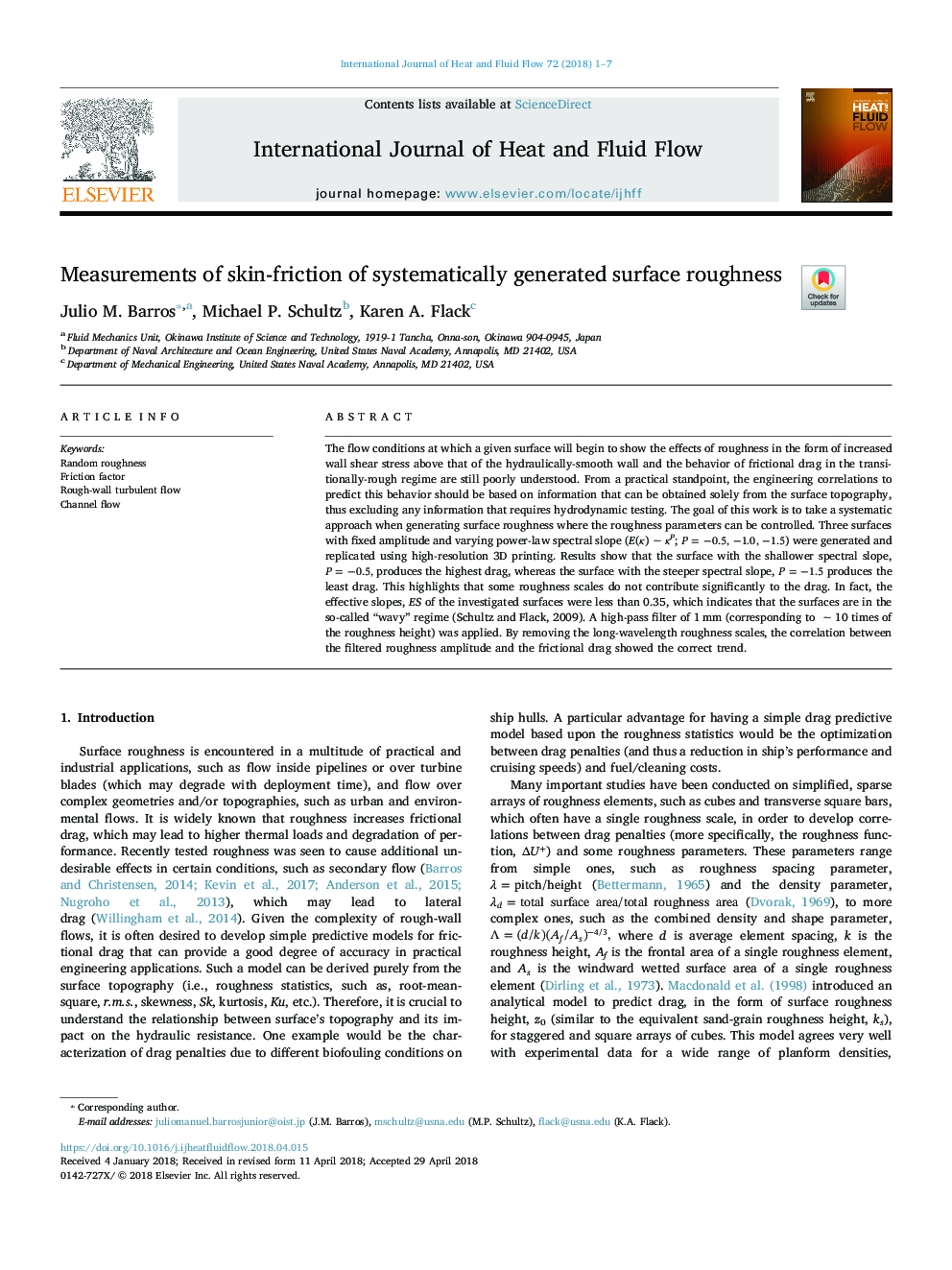| کد مقاله | کد نشریه | سال انتشار | مقاله انگلیسی | نسخه تمام متن |
|---|---|---|---|---|
| 7053422 | 1457606 | 2018 | 7 صفحه PDF | دانلود رایگان |
عنوان انگلیسی مقاله ISI
Measurements of skin-friction of systematically generated surface roughness
ترجمه فارسی عنوان
اندازه گیری های اصطکاک پوست از زبری سطح به طور منظم تولید شده است
دانلود مقاله + سفارش ترجمه
دانلود مقاله ISI انگلیسی
رایگان برای ایرانیان
کلمات کلیدی
زبری تصادفی، فاکتور اصطکاک، جریان آشفته ای دشوار جریان کانال،
موضوعات مرتبط
مهندسی و علوم پایه
مهندسی شیمی
جریان سیال و فرایندهای انتقال
چکیده انگلیسی
The flow conditions at which a given surface will begin to show the effects of roughness in the form of increased wall shear stress above that of the hydraulically-smooth wall and the behavior of frictional drag in the transitionally-rough regime are still poorly understood. From a practical standpoint, the engineering correlations to predict this behavior should be based on information that can be obtained solely from the surface topography, thus excluding any information that requires hydrodynamic testing. The goal of this work is to take a systematic approach when generating surface roughness where the roughness parameters can be controlled. Three surfaces with fixed amplitude and varying power-law spectral slope (E(κ)â¯â¼â¯ÎºP; P=â0.5,â1.0,â1.5) were generated and replicated using high-resolution 3D printing. Results show that the surface with the shallower spectral slope, P=â0.5, produces the highest drag, whereas the surface with the steeper spectral slope, P=â1.5 produces the least drag. This highlights that some roughness scales do not contribute significantly to the drag. In fact, the effective slopes, ES of the investigated surfaces were less than 0.35, which indicates that the surfaces are in the so-called “wavy” regime (Schultz and Flack, 2009). A high-pass filter of 1â¯mm (corresponding to â¯â¼â¯10 times of the roughness height) was applied. By removing the long-wavelength roughness scales, the correlation between the filtered roughness amplitude and the frictional drag showed the correct trend.
ناشر
Database: Elsevier - ScienceDirect (ساینس دایرکت)
Journal: International Journal of Heat and Fluid Flow - Volume 72, August 2018, Pages 1-7
Journal: International Journal of Heat and Fluid Flow - Volume 72, August 2018, Pages 1-7
نویسندگان
Julio M. Barros, Michael P. Schultz, Karen A. Flack,
